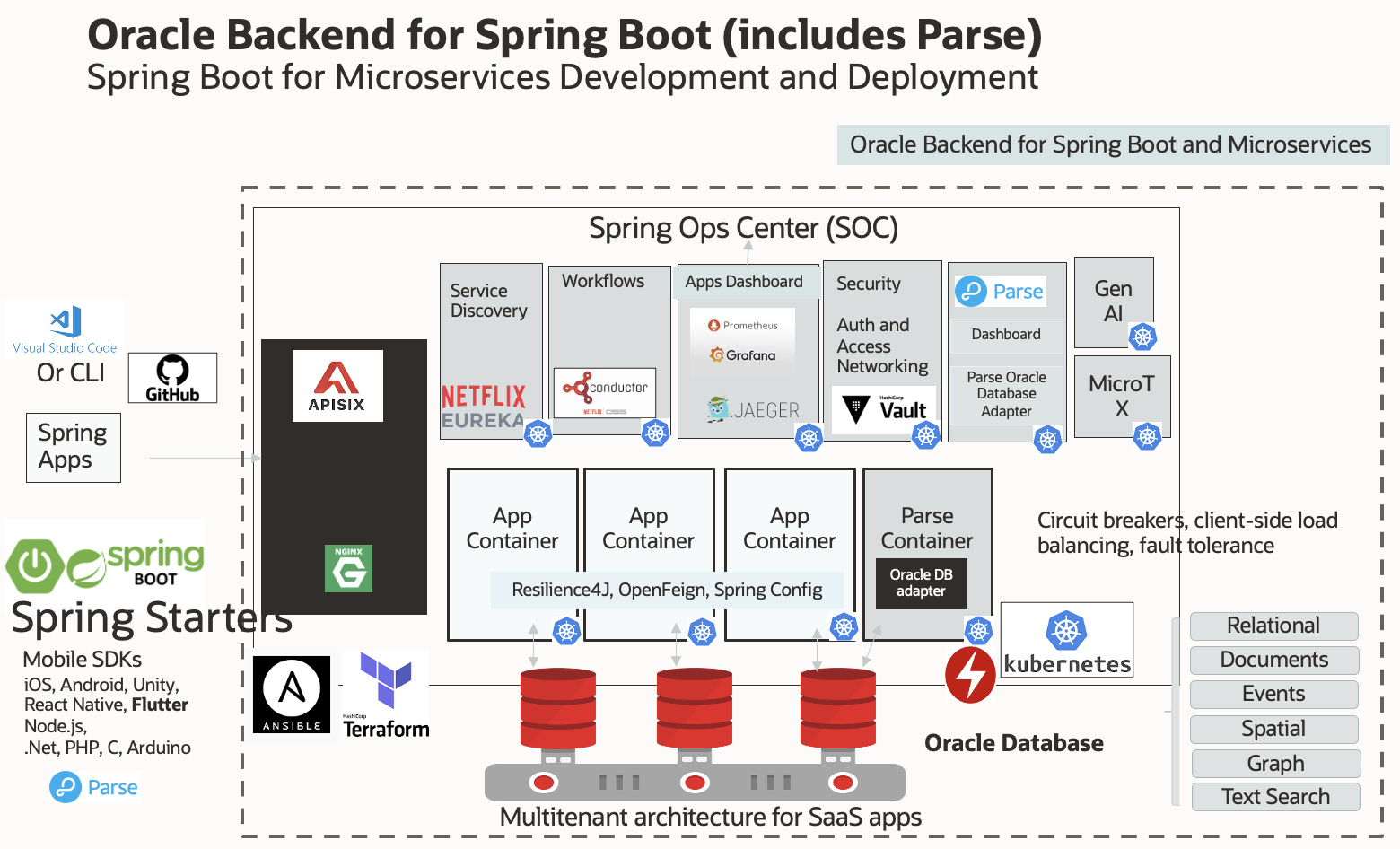
Oracle announced the GA of Oracle Backend for Spring Boot and Microservices on the OCI Marketplace with production support available from Oracle. This stack is provisioned with a single click on Oracle Cloud Infrastructure (OCI) for developers to develop and deploy applications with ease. A custom install of the platform allows on-premises, Azure, and infrastrucure provisioned on other public clouds with the option of bring-your-own components for production use. The platform runs with Kubernetes, application containers, and auto-scales both the app and the database platform components seamlessly. The platform is referred to as Oracle Backend-as-a-Self-Service (OBaaS) which helps database and data engineering teams to provide DevOps and DataOps services to application development teams, bridging the growing gap between developers and DBAs.
OBaaS allows Java developers using Spring Boot to provision and deploy a dev/test/prod backend with a single click to run their applications on Oracle Cloud. Working in Visual Studio Code, with VS Code extensions, Spring Config, Spring Starters, and Command Line Interface (CLI), modern applications can be built and deployed very easily taking advantage of the converged Oracle Database. This unifies developers, DevOps, and Data engineers/DBAs to build, deploy, monitor, scale, and tune enterprise applications very easily. Customers tell us that integrated platforms challenge existing processes and organization boundaries, and for maximum productivity some changes are required to get the promised agility from microservices.
OBaaS also includes a full-stack JavaScript based mobile development environment using Parse APIs with the converged Oracle Database. Parse has a variety of developer SDKs to build Android and iOS mobile apps. An Oracle Database adapter is written to take advantage of the converged Oracle Database, which adds to Parse’s available MongoDB and Postgres database adapters. Applications can be built with the equivalent of a MERN stack – Document database, Express.js, React.js, Node.js – as part of the Parse APIs for mobile and web full-stack applications, and deployed alongside Spring Boot containers.
The stack components are shown below

Enterprises tend to intermingle web-first and mobile-first applications, so yet another kind of convergence is emerging with both Java and Javascript backends, and web and mobile front-ends with JavaScript. The availabilty of a provisioned backend platform unifies developers, architects, DevOps, and DBAs like never before, and this simplifies the end-to-end lifecycle of modern enterprise applications, observed Wei Hu, SVP Engineering for Emerging Technology and High Availability in the Oracle Database development team.
Many customers have tested and started to adopt this platform for their application stack with the developer edition released on Dec 2022. Some customers have gone live and some are nearing releasing their products built with the OBaaS stack.
Quick start guide: https://bit.ly/oraclespringboot
Two hands-on labs guide you to deploy microservices and get started to deploy your own applications into the provisioned stack starting with CloudBank as an example – https://bit.ly/CloudBankOnOBaaS ; the second one is Kubernetes for DBAs https://bit.ly/KubernetesForDBAs
For questions and feedback send email to obaas_ww@oracle.com Join Oracle Developers Slack #oracle-db-microservices channel. Oracle Database customers can get support by contacting Oracle Support.
The team looks forward to hearing from you, and helping you to maximize productivity and efficiency with your microservices and mobile development efforts with the Oracle Database.
Explore microservices architectures and modern application development with Oracle Database, and read about the innovation in Oracle Database at https://oracle.com/database.
